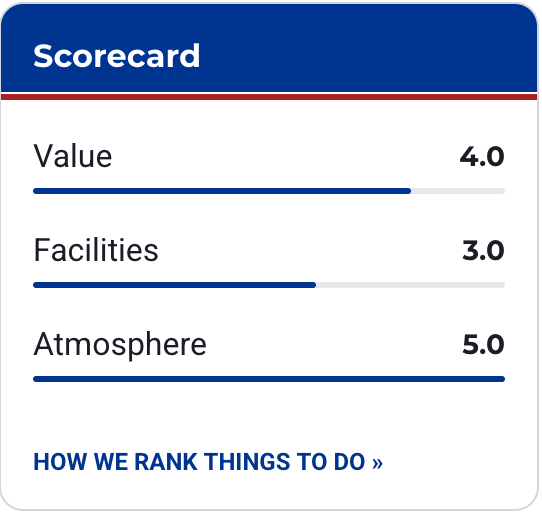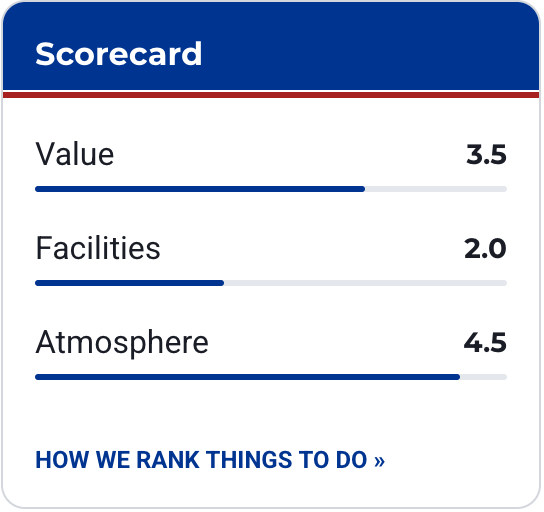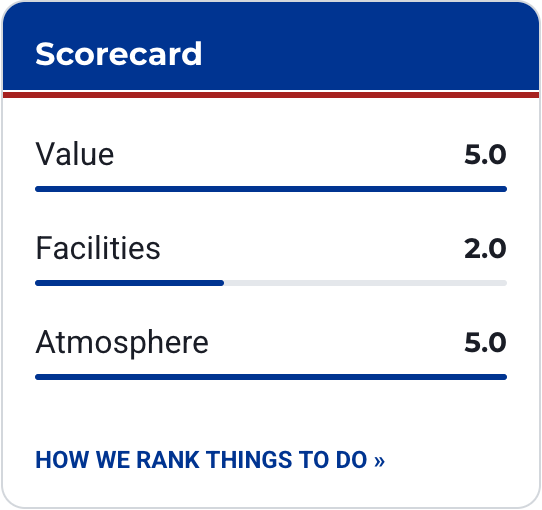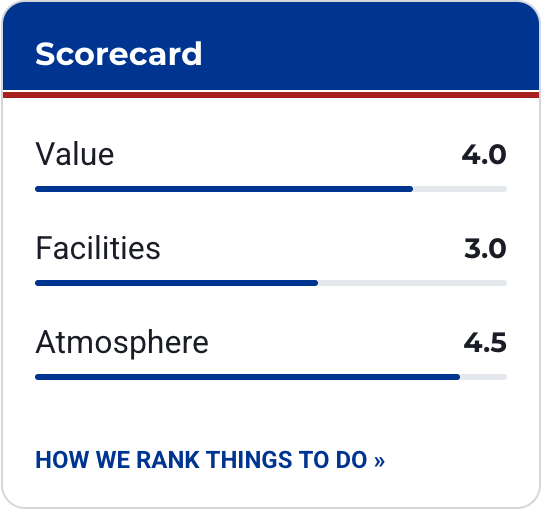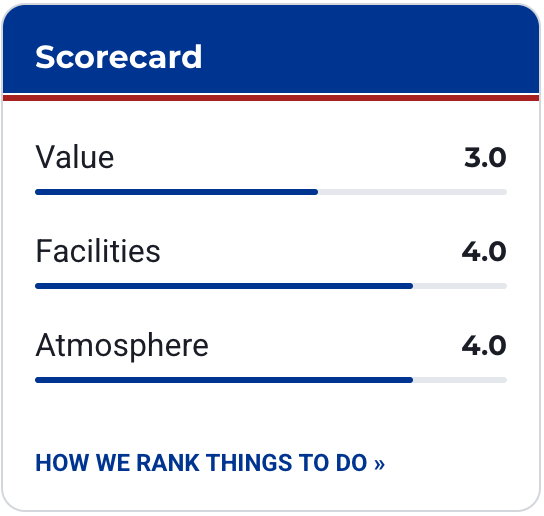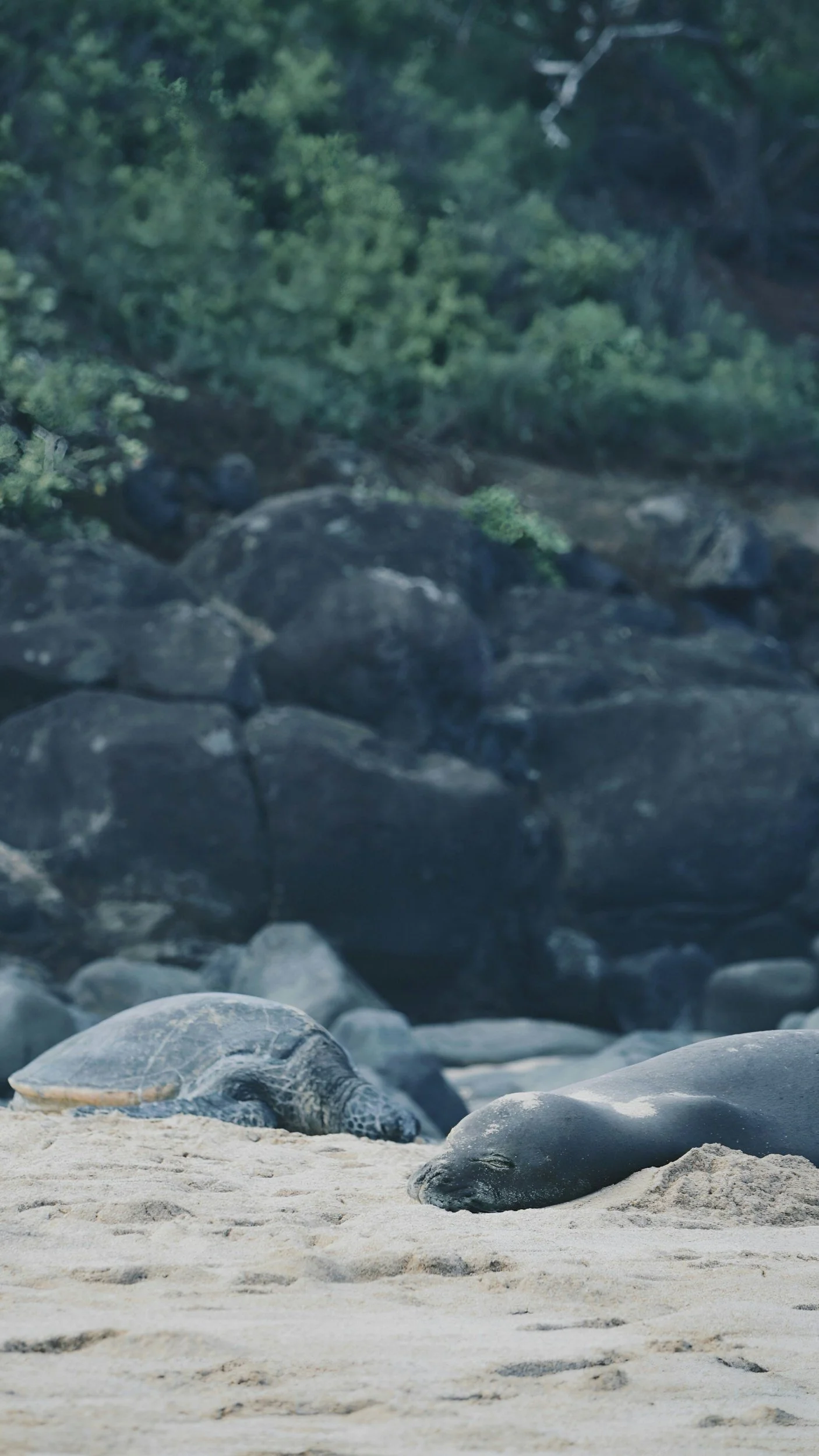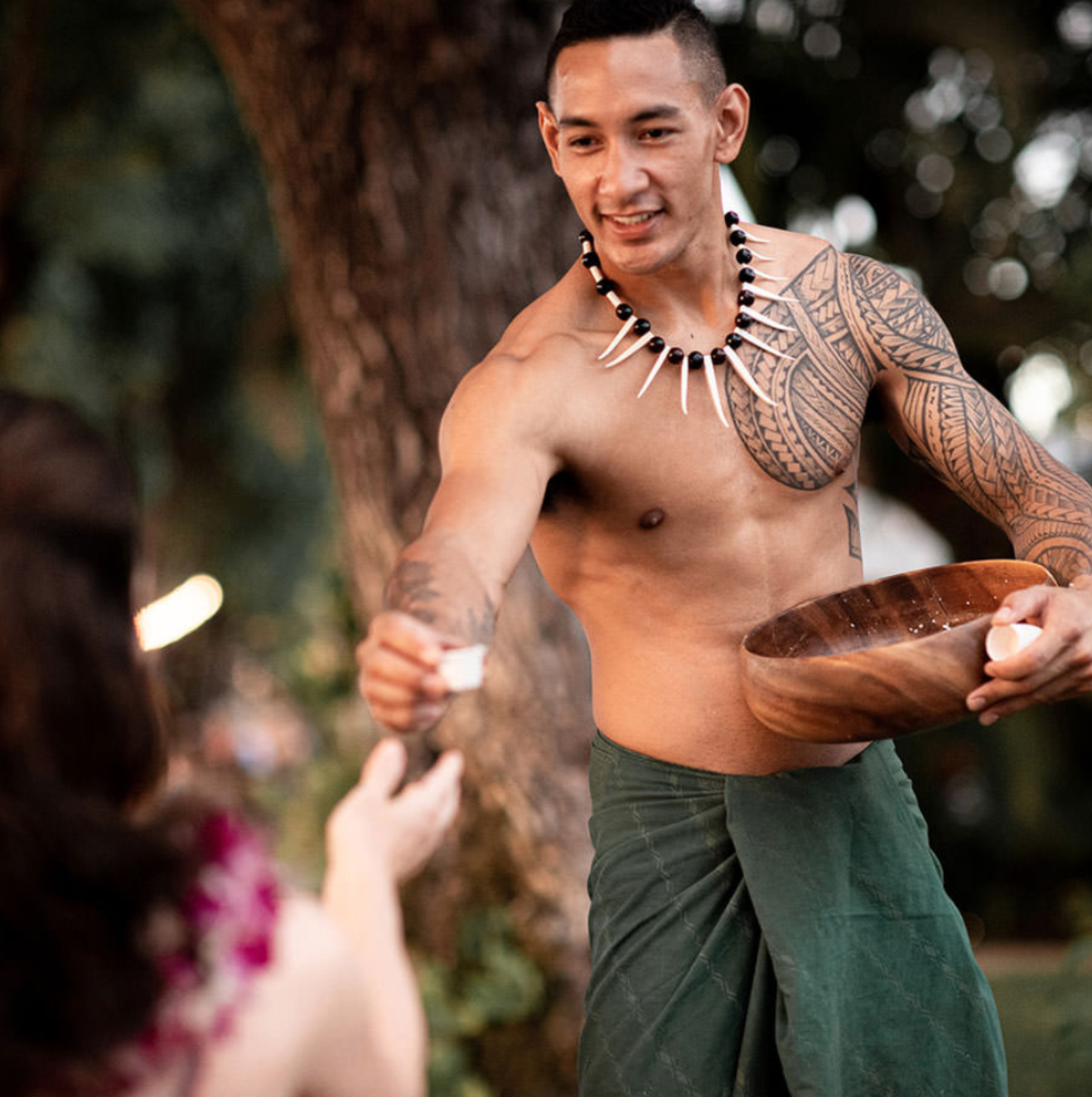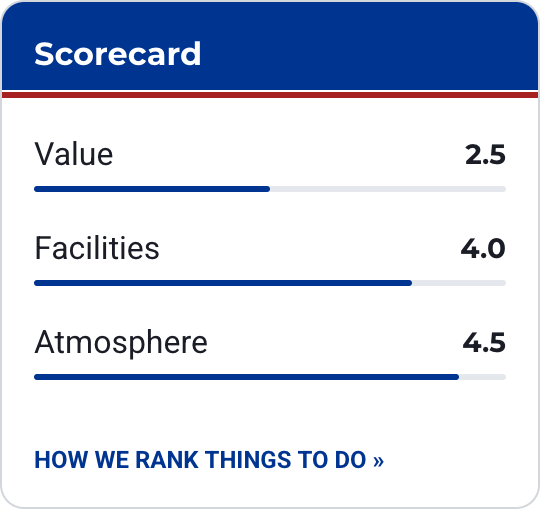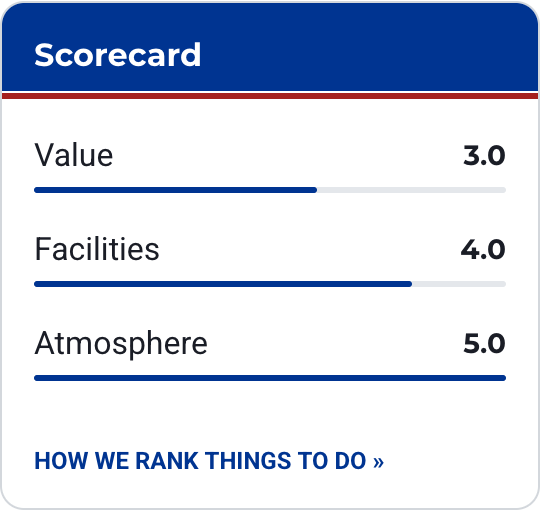29 Best Things to Do in Maui for 2025
Let our Hawaii travel experts, Ashley Probst and Sharael Kolberg, show you how to make the most of the best attractions in Maui, including the stunning Road to Hāna. Plus, see their recommendations for spots loved by locals, such as Mama’s Fish House.
1. Admire the sunrise at Haleakalā National Park
What's the best way to experience Haleakalā National Park? The best way to experience Haleakalā is to drive into the park and then explore by foot – whether that's hiking into the crater, walking the coastal trails in Kipahulu or simply taking in the panoramic views.
Other than the volcano, what else is there to do here? Haleakalā has two districts: The summit is known for epic sunrises and sunsets, crater hikes, stargazing and nearby activities like zip lining or downhill bike tours, while Kipahulu (near Hāna) is home to the lush Pipiwai Trail, waterfalls and rugged coastal beauty. Both offer camping and ranger-led programs like guided walks and cultural talks.
Can I visit on my own, or should I go with a tour? You can visit on your own with a rental car, but going on a tour is recommended for novice drivers who may not be comfortable traversing the steep switchbacks and narrow roads leading to both the summit and Kipahulu. There are several top-rated bike tours that are a great option if you're hoping to see the park at sunrise.
What should I wear/pack for my visit? The summit can reach temperatures below freezing – and it even snows on rare occasions – so layer up and consider bringing blankets for extra warmth. Kipahulu has a more tropical climate, so wear breathable clothing that you won't mind getting wet from the mist coming off Waimoku Falls. Wherever you go, be sure to wear sun protection and pack sturdy shoes, plus any gear you'll need for hiking or camping.
When's the best time to go? If you're able to secure a reservation for sunrise at the summit, head up an hour or two early to stargaze before witnessing the most magical start to any day, then hike into the crater during the cooler morning hours. Kipahulu is best enjoyed during Maui's dry season, from April to October, when trails are drier and the waterfalls are flowing.
2. Drive the scenic Road to Hāna
Is the Road to Hāna worth it? Absolutely. The Road to Hāna is one of the most scenic drives in the world, with a vast array of places to stop and explore along the way – no two trips are ever the same. The road was carved along a cliffside, preserving as much of the area's natural beauty as possible, giving it the feel of stepping back into ancient Hawaiʻi.
Can I drive the road myself, or should I sign up for a guided tour? You can drive the road yourself, but with more than 600 hairpin turns and nearly 60 one-lane bridges, only experienced drivers should attempt it. Locals are familiar with the route and tend to drive fast, so be courteous and let them pass. For those with driving anxiety, opt for a guided tour – it also comes with perks like curated stop recommendations and insights into the area's cultural and historical significance.
What should I pack for the drive? Wear a bathing suit – you may come across a waterfall you want to jump into before hitting any public rest stops where you can change. Pack towels, a change of clothes, hiking shoes and sandals (depending on your preferred activities), snacks, anti-nausea medication, and be sure to download your favorite playlist as cell service is spotty along the way.
What are some of the must-see stops or hidden gems along the route?
Twin Falls for an easy hike and multiple waterfalls
The Garden of Eden Arboretum to see lush gardens and peacocks
Keʻanae Peninsula for coastal views and Aunty Sandy's famous banana bread
Makapipi Falls, a beautiful hidden gem offering a rare top-down view of a waterfall, visible only from the road
3. Relax on the golden sand of Kāʻanapali Beach
How does Kāʻanapali compare to Maui's other beaches? Kāʻanapali Beach is expansive, not just in size – with 3 miles fronting most of the West Side's major resorts – but also in the variety of beach activities available. In addition to surfing and beach volleyball, you'll find adventures like parasailing and Jet Skiing (only available outside of whale season) and cliff diving at Puʻu Kekaʻa (Black Rock).
Describe the atmosphere/ambiance. There's an eclectic vibe at this beach, with a mix of couples, families and locals of all ages. The variety of activities attracts everyone from laid-back sunbathers to adrenaline junkies.
When's the best time to go? There's no bad time to visit Kāʻanapali, but arriving early gives you the best shot at claiming your ideal spot on the sand. Spend the day lounging, playing in the waves or heading out on an aquatic adventure, then make your way to Puʻu Kekaʻa (Black Rock) to watch the the sunset cliff diving ceremony. Cap it all off with dinner and drinks at Hula Grill or Monkeypod Kitchen.
What else is there to do here (besides relax)? Of all the beaches on Maui, Kāʻanapali offers the widest variety of activities. You can book boat tours, snorkeling, scuba diving, kayaking, paddleboarding, surfing, and other seasonal offerings. Stroll down the beach path to discover something exciting at every resort – like live performances at the Sheraton Maui Resort & Spa, cold beer from the on-property Maui Brewing Co. at OUTRIGGER Kāʻanapali Beach Resort, a 10,000-square-foot arcade at The Westin Maui Resort & Spa, a monarch butterfly farm at Marriott's Maui Ocean Club, and African black-footed penguins at the Hyatt Regency Maui Resort & Spa. You'll also find multiple luau experiences, delicious dining and stellar shopping, all within walking distance.
What's the best way to get to Kāʻanapali? If you're coming from the airport, the best option is to drive – either by renting a car or hiring a driver, though the latter can be pricey. Most resorts in the area don't offer shuttle service, while public transportation is time-consuming and not ideal for luggage. Once you're in Kāʻanapali, the area is highly walkable.
7. Savor fresh seafood at Mama's Fish House
Plan Ahead: This restaurant is incredibly popular and its reservations open up to 18 months in advance. Book your table online or over the phone as soon as possible.
Why is this restaurant a must-visit on Maui? Nestled in Kuʻau Cove, Mama's Fish House is famous for its enchanting ocean views and fresh, locally caught seafood – often featuring the name of the fisherman or their boat and where the fish was caught right on the menu.
What are some of your favorite menu items? The menu changes regularly to reflect the freshest catches, but standout dishes have included crispy fish collars – also known as the fisherman's cut – or crab cakes, followed by one of the daily fish preparations, especially if it's served in a curry. No meal is complete without the Polynesian black pearl dessert, which is as decadent as it is photo-worthy.
What's the atmosphere like? The vintage, island-style decor creates a sense of nostalgia, reflecting the restaurant's storied history as a beloved family-owned establishment that's been open 1973. Staff in vibrant Aloha Wear add to the whimsical Hawaiian vibe, making the experience feel both timeless and celebratory.
Is it best suited for diners celebrating a special occasion, or are families welcome here too? Mama's Fish House is the perfect spot to celebrate a special occasion – whether it's a birthday, anniversary, engagement, graduation or anything in between. It's also family-friendly, offering a $20 kids' menu (though children are expected to be well-behaved to maintain the restaurant's peaceful atmosphere).
Do I need a reservation? Yes, reservations for the dining room are required and often book out months in advance. If you're hoping to dine without one, walk-ins are accepted for bar seating on a first-come, first-served basis, depending on availability.
9. ‘Iao Valley State Monument
What are some of the popular activities at ʻIao Valley State Park? ʻIao Valley is home to easy, scenic hikes like the Ethnobotanical Loop for viewing tropical flora and the ʻIao Needle Lookout Trail, a short 15-minute climb that rewards you with panoramic island views. Locals often hang out along the stream, basking on the rocks or wading in the healing waters – just be mindful of flash flood warnings. You'll also find cultural immersion at the nearby Kepaniwai Park and Heritage Gardens, and hands-on educational experiences (especially for kids) at the Hawaiʻi Nature Center.
What are your top tips for visiting 'Iao Valley State Park? Arrive prepared for hiking, swimming and cooler temperatures. This is also a great place to get in touch with your spiritual side and connect with Mother Nature – release what no longer serves you and let the river carry it away, then set intentions for moving forward. It's important to honor the significance of this location, as it was the site of a pivotal battle that changed the course of Hawaiian history.
Is it suitable for wheelchairs or strollers? Although the trails in this park can be steep, they are fully paved and generally accessible. Going uphill may be a bit challenging, and not every nook and cranny is reachable, but you can still take in the park's natural beauty.
Do I need a reservation to visit? Yes, parking and entry reservations are required for non-residents. Parking costs $10 per vehicle and entry tickets cost $5 per person. Reservations can be made online on the Hawaiʻi state parks website up to 30 days in advance.
10. Enjoy fun in the sun at Nāpili Bay Beach
How does Nāpili Bay compare to Maui's other beaches? Nāpili Bay is a secluded cove in northern West Maui, known for its calm waters, excellent snorkeling and frequent turtle sightings. The surrounding low-rise buildings and resorts intentionally preserve that old Hawai'i charm, offering a more tucked-away feel compared to Maui's more developed beaches. With stunning views of Lana'i and Moloka'i, it's ideal for those seeking a quieter beach day.
When is the best time to visit? Visiting in the morning generally offers cooler temperatures and calmer waters, which are also more common during the summer months. The off-season brings fewer crowds, but the ocean conditions tend to get rougher as winter progresses.
What else is there to do here (besides swim and sunbathe)? Explore the aquatic landscape by snorkeling, kayaking or paddleboarding – each offering a different perspective and level of intensity.
Is there anything to do nearby that's worth checking out? Brunch at The Gazebo restaurant is a must. There's always a line to dine in, but it's worth waiting for the oceanfront views, cozy atmosphere and mouthwatering banana macadamia nut pancakes with coconut syrup. On the other end of the beach, Sea House Restaurant offers an award-winning, upscale dining experience with Hawaiian fusion fare. Also within a short drive are the Kapalua Coastal Trail, Dragon's Teeth lava rock formation, a peaceful labyrinth and adventure activities like zip lining or all-terrain vehicle tours.
11. Swim and chill at Wailea Beach
Key Highlight: The Wailea Beach Path runs along the coastline and is a great way to stretch your legs after lying on the beach for awhile.
What were your first impressions of Wailea Beach? Wailea Beach feels like it was designed with visitors in mind – it fronts two five-star resorts (the Four Seasons Resort Maui at Wailea and the Grand Wailea, A Waldorf Astoria Resort) and features boardwalk-style stairs that lead down to the sand. There's not much natural shade, so bringing an umbrella is a good idea. Despite the developed feel, it's common to see wildlife like turtles sharing the beach with sunbathers.
Who is Wailea Beach best suited for? While everyone is welcome at this beach, it's best suited for families staying at the Four Seasons or Grand Wailea. The waters are typically calm, and lounge chair and umbrella rentals are available exclusively to resort guests.
Are there any services/vendors at the beach? There aren't any vendors directly on the sand, but nearby resort-based operators offer plenty of options. Maui Undersea Adventures at the Four Seasons operates guided underwater scooter tours, along with snorkeling, scuba diving and more. Aqualani Beach & Ocean Recreation at the Grand Wailea features turtle-focused snorkel tours, aqua glider rentals and other ocean activities.
What's nearby? If you're looking to explore beyond the beach, check out the Wailea Golf Club. For something more wellness-focused, the Wailea Healing Center offers sound healings and massages, while Maui Singing Bowl features a massive sound bowl big enough to hold an adult lying in a hammock.
Other than swimming, what else is there to do here? Take a walk along the shoreline, watch the sunset or relax with a book on the golden sand. A paved beach path connects all of the Wailea resorts – worth exploring in their own right – and leads to the Shops at Wailea, where you'll find world-class shopping and dining.
12. Discover the untouched shores of Mākena Beach State Park
What are the beaches like at Mākena Beach State Park? Mākena Beach State Park is home to three distinct beaches. Oneloa Beach (Big Beach) is the largest stretch of sand in South Maui, offering plenty of space for sunbathing, picnicking and aquatic activities – though the powerful shore break makes it risky for inexperienced swimmers. A short hike over a lava rock outcropping leads to Little Beach, a smaller, more sheltered cove known for its clothing-optional crowd. On the opposite end of the park is Oneʻuli Beach, a black sand beach with excellent snorkeling and diving.
When is the best time to visit? Early morning or late afternoon are the ideal times to visit. Mornings offer cooler temperatures and softer sunlight, while late afternoons reward you with spectacular sunset views.
Are there any vendors or services here or nearby? There are a few food trucks nearby, but not much is available directly on the beaches. Big Beach has a volleyball net, though you'll need to bring your own gear. It's also one of the few beaches on Maui with lifeguards on duty, which adds an extra layer of safety.
What are your top tips for visiting? There are three separate entrances, each with its own parking lot, but spaces are limited. While street parking is available, it's recommended to pay for parking regardless to help support park maintenance. Bring your own shade – most natural cover comes from kiawe trees (known for their thorny branches) or along the cliffside where rock slides can occur, so it's best to avoid setting up under either. Be cautious if entering the water, as this area has some of the strongest waves and currents on Maui, and has the highest number of spinal injuries in Hawaiʻi.
14. See the black sand at Waiʻānapanapa State Park
How does Waiʻānapanapa State Park compare to Maui's other beaches? Waiʻānapanapa State Park, located in remote Hāna, offers a dramatically different experience from Maui's more accessible resort beaches. It's home to Paʻiloa Beach, a striking black sand cove, as well as a rugged coastal trail and lava tube caves to explore – perfect for those seeking scenery, solitude and adventure.
Do I need a reservation to visit? Yes, a reservation and fees are required: $10 per vehicle for parking and $5 per person for entry. Hawaiʻi residents are exempt from both. Reservations can be made up to 30 days in advance on the state parks website. Campsites are also available, but must be booked well in advance.
Can I visit on my own, or do I need to go with a tour group? If you go with a tour group, you'll likely explore the park independently during a short stop, as many tours pause here for lunch and light sightseeing. Entry fees are waived for those arriving by tour bus, and it's a convenient way to see other highlights along the Road to Hāna. That said, visiting on your own gives you the flexibility to spend as much time as you like (within your reservation time slot) exploring the park, lounging on the black sand and enjoying a meal at your own pace.
What should I bring for my visit? Comfortable walking shoes, swimwear, a towel, sun protection, water and snacks are all a must. If you plan to stay overnight – whether in a tent, campervan or a cabin – bring any necessary camping gear, including a flashlight or headlamp.
Any fun facts or top tips for visiting? Waiʻānapanapa means "glistening freshwater," a nod to the nearby anchialine pools that hold both ocean and freshwater. Be sure to explore the sea cave down on the beach. For a deeper sense of place, hike a portion of the historic King's Trail, once traveled by ancient Hawaiian chiefs.
15. Visit Maui Ocean Center
What is Maui Ocean Center? The Maui Ocean Center is an award-winning aquarium located in Māʻalaea, one of the windiest harbors in the world. It's home to the largest living reef aquarium in the Western Hemisphere – with more than 40 species of indigenous coral – and features interactive exhibits that educate visitors about Hawaiʻi's marine life and cultural heritage.
What are some of the must-sees here? The Open Ocean Exhibit features an underwater tunnel that lets you walk through a 750,000-gallon tank brimming with Hawaiian sea creatures, and also offers shark diving experiences for certified divers. The Sphere is an IMAX-style theater that plays an immersive short film about humpback whales, along with occasional special screenings. Finally, touch pools allow for hands-on experiences with sea cucumbers, starfish and urchins.
What's a detail about Maui Ocean Center you noticed that others might overlook? Sustainability is woven into nearly every aspect of the aquarium – which is certified by the Sustainable Tourism Association of Hawaiʻi – from exhibits highlighting coral restoration and conservation efforts on Kahoʻolawe to locally sourced seafood at the on-site Seascape Restaurant.
Is this mostly for kids, or will adults be entertained as well? The attraction is kid-friendly, but not exclusive to a younger audience. Visitors of all ages can enjoy the exhibitions, expert talks and other activities.
Are there any recommended activities or sights nearby? Māʻalaea Harbor offers an abundance of water activities and is a great jumping-off point for a variety of tours, including sailing, snorkeling, seasonal whale watching and sunset dinner cruises, all with spectacular, 360-degree views of Māʻalaea Bay.
Nearby, the Maui Harbor Shops feature shopping, dining and entertainment – grab an ice cream sandwich from Hula Cookies or catch live music and comedy shows at da Playground Maui. Families with children can check out the Maui Golf & Sports Park for bumper boats, mini golf and a climbing wall.
20. Watch the surfers at Hoʻokipa Beach Park
Why is Hoʻokipa a special beach in Maui? Hoʻokipa Beach Park is one of the best places on Maui to see giant green sea turtles, which often come ashore to sunbathe. It's also a world-renowned windsurfing destination, frequently hosting professional competitions.
Can I swim here? What about surfing? The beach mainly attracts visitors who want to observe (either the turtles or the windsurfers), and is not generally not considered a top spot for swimming. You can swim at Hoʻokipa, but conditions can be rough, so always check the surf report before entering the water. Surfing here is best suited for experienced wave riders due to challenging conditions.
How can I make the most of my visit to Hoʻokipa? Pack a lunch and enjoy it oceanside while watching athletes carve through the waves. Take a walk along the beach and go for a dip if conditions are safe. Don't miss the far end of the beach, where sea turtles often come ashore to rest – but be sure to keep a respectful distance; you're legally required to stay at least 10 feet away from the animals.
Where's your favorite place to grab a bite to eat around the park?
Pick up breakfast at Choice Health Bar, which serves açaí bowls, smoothies and other grab-and-go items.
For lunch or a casual dinner, Flatbread Co. makes some of the best pizza on the North Shore – Mopsy's kalua pork pie is a must-try.
If you're in the mood for something more refined, enjoy an intimate dining experience at Wabisabi Soba & Sushi or opt for a fresh, oceanfront feast at the iconic Mama's Fish House.
What else should I check out while I'm in the area? The closest town is Pāʻia, one of Maui's original hippie hubs. It's home to boutique shops, cute cafés, tasty restaurants, art galleries, a health-conscious grocery store, holistic spas and even a few Buddhist temples. You'll also find additional beaches nearby – like Baldwin Beach, which hosts a lively drum circle on Friday nights.
21. Take a tour to Molokini Crater
I heard Molokini Crater is a great snorkeling spot. Does it live up to the hype? Molokini Crater absolutely lives up to its reputation. The water clarity is unmatched and the crescent-shaped islet provides natural protection that creates ideal conditions for viewing the abundant sea life.
What's your favorite part of snorkeling at Molokini? Perspective. Just beyond the reef's edge is a steep drop-off – one you're advised to steer clear of – that serves as a striking reminder of how vast and humbling the ocean truly is.
What tour companies do you recommend? You can't really go wrong with any Molokini tour, but a local favorite is Trilogy Excursions – especially now, as supporting the company helps it continue to recover from the loss of a boat and part of its business in the 2023 Lahaina fire.
I can't swim. Is a visit still worth it? Yes, you can go just for the scenic boat ride and up-close views of the crater. Most tours also include food, so you can relax and have lunch out on the water.
What should I bring with me? Wear a bathing suit and clothing you don't mind getting wet, and bring sandals, sun protection (including reef-safe sunscreen), towels, and a camera (ideally with an underwater case) to help capture the moment.
Do you have any final tips for visiting? Always listen to your tour guides, as they're experts on the islet, the surrounding marine life and how to keep you safe during the excursion. And don't wander too close to the edge of the reef, since strong currents and unpredictable conditions can make it dangerous.
22. Experience an authentic lūʻau at the Old Lahaina Lūʻau
Photo courtesy of Old Lahaina Lūʻau
How do I know if a lūʻau is authentic? Most lūʻau represent various Polynesian cultures, but the Old Lahaina Lūʻau stands apart for its exclusive focus on Hawaiian history, language and traditions. It's one of the most popular shows on the island, even without fire dancing, which is intentionally omitted from the show out of respect for its Samoan and Maori origins.
What should I expect from an Old Lahaina Lūʻau? Expect pre-show activities like lawn games, photo opportunities, local artisan shopping and the ceremonial uncovering of the imu – an underground oven that fills the air with the mouthwatering aroma of slow-roasted kalua pork. Diners are then treated to a multi-course meal featuring traditional Hawaiian dishes, served alongside a captivating performance that tells the story of Hawaiʻi through mele (song) and hula (dance).
What's your favorite thing to eat at a lūʻau? Succulent, perfectly seasoned kalua pork dipped in poi is a longtime fan favorite, and the haupia coconut pudding is a close second.
I have dietary restrictions. Will I be able to eat anything? It depends on your dietary restrictions. The Old Lahaina Lūʻau can provide vegetarian, vegan and gluten-free meals with advance notice, but it can't accommodate allergies.
Is the lūʻau good for young kids? The Old Lahaina Lūʻau includes kid-friendly activities and the performances are engaging for all ages. That said, very young children may get restless during the three-hour show.
Do I need a reservation? Yes, reservations are required and tickets can sell out months in advance during the busy season, so it's best to book early.
24. Learn how to surf
Where can I take surf lessons in Maui? Surf lessons are available all over the island, but some of the best places for beginners are Kāʻanapali Beach in Lahaina or Kalama Park in Kīhei. Kāʻanapali Surf Club, Maui Surf Lessons and Swell Maui Surf are a few popular companies that offer surf lessons.
What do I need to know before I book a lesson? You don't need any prior surfing experience, but you do need to know how to swim. When booking, choose a morning lesson for calmer, crowd-free waters and lighter winds. You'll also want to consider whether you'd prefer the focused attention of a private lesson or the more affordable option of a group class.
What should I bring? Swimwear, reef-safe sunscreen and a towel are all essentials. Surfboards are typically provided by the surf school, but check whether they also supply rash guards and reef shoes.
Can anyone learn to surf? Absolutely. Some surf schools even guarantee you'll stand up at least once during your lesson. That's because the early stages of surfing are less about physical strength and more about finding your balance.
Where's your favorite place to surf? Launiupoko Beach Park, which has easy access to the water, gentle waves and a laid-back vibe.
Any other tips before I hang ten? Learn a bit about surf etiquette before getting in the water. Instructors will usually guide you and keep you out of the way of more experienced surfers, but it's still important to understand basics like not cutting someone off or blocking their path when they have the right of way on a wave.
26. Take a Maui Pineapple Tour
What's your favorite part of the pineapple tour? Learning about the history of pineapple production in Hawaiʻi – and hearing tips on how to choose the perfect pineapple.
What's a detail about the pineapple tour you noticed that others might overlook? It's actually ideal to take this tour on an overcast day or even when there's light drizzle. The fields can get scorching hot under the midday sun, and a bit of rain helps cool things down while packing down the red Maui dirt, keeping it off your clothes and shoes.
Is round-trip hotel transportation included in the cost of the tour? No, you'll need to arrange your own transportation to the Maui Pineapple Store in Haliʻimaile.
Will I get to sample some pineapple? Yes, you'll taste fresh pineapple straight from the fields and each participant receives a whole pineapple to take home at the end of the tour.
Are there any activities/attractions to do before or after the tour? Haliʻimaile is a small town with some hidden gems. You can dine at the Haliʻimaile General Store, watch glassblowing at Makai Glass Maui, enjoy a tour and tasting at the Haliʻimaile Distilling Co., or explore art and culture at the Hui Noʻeau Visual Arts Center.
28. Explore the Hāna Lava Tube (Kaʻeleku Caverns)
Does the Hāna Lava Tube have actual lava? No, there's no active lava now, but the Hāna Lava Tube was formed nearly 1,000 years ago by molten rock that flowed underground and eventually cooled, leaving behind the cavern you can explore today.
How should I spend my time here? Take a self-guided tour through the tube, where informative signage helps you navigate the intricate cave system at your own pace. It's a great opportunity to learn about this geological marvel and how it's been naturally preserved over time.
I don't like caves. Is there anything else to do while my companions explore? Nearby, you'll find coastal hikes and beach relaxation at Wai'anapanapa State Park, lush scenery at the Hāna Maui Botanical Gardens, plus farm tours where you can learn about agroforestry at Hāna Gardenlands or chocolate production at Hāna Gold Cacao Plantation.
I have mobility issues. Will I still be able to tour the cave? Unfortunately, the lava tubes aren't suitable for those with mobility issues. The main entrance has a steep descent that isn't wheelchair accessible and the interior terrain is very uneven.
What's a detail that travelers may not notice? Powerful flashlights are provided for the self-guided tour, but part of the magic comes from turning them off – just for a moment – to experience what it's like to be surrounded by complete, natural darkness.
29. Marvel at the Nākālele Blowhole
Why is the Nākālele Blowhole a must-see? This natural geyser can shoot water up to 100 feet into the air, creating a dazzling display and some of the most dramatic photo ops on Maui.
When is the best time to see the geyser? The blowhole is most impressive during high tide or when the surf is strong. That's when waves crash into the lava tube below, forcing water through a small opening and shooting it high into the air.
How do I get a good picture of the geyser? Waves come in sets, so you'll have multiple chances to snap the perfect shot depending on how long you stay. Keep a safe distance from the blowhole and use a live or burst photo mode to increase your chances of capturing that awe-inspiring moment.
How do I get to the blowhole? Drive north on Honoapiʻilani Highway past Kapalua in West Maui. After parking at the unofficial lookout point near mile marker 38.5, it's a short but rocky hike down to the blowhole – so wear sturdy shoes and watch your step.
What else should I do or see in the area? Nearby attractions include the Nākālele Point Lighthouse, scenic hikes like the ʻOhai or Acid War Zone trails, and several lookouts and beaches. Local favorites include Honolua Bay for snorkeling and forest bathing, and Slaughterhouse Beach for boogie boarding and body surfing.




